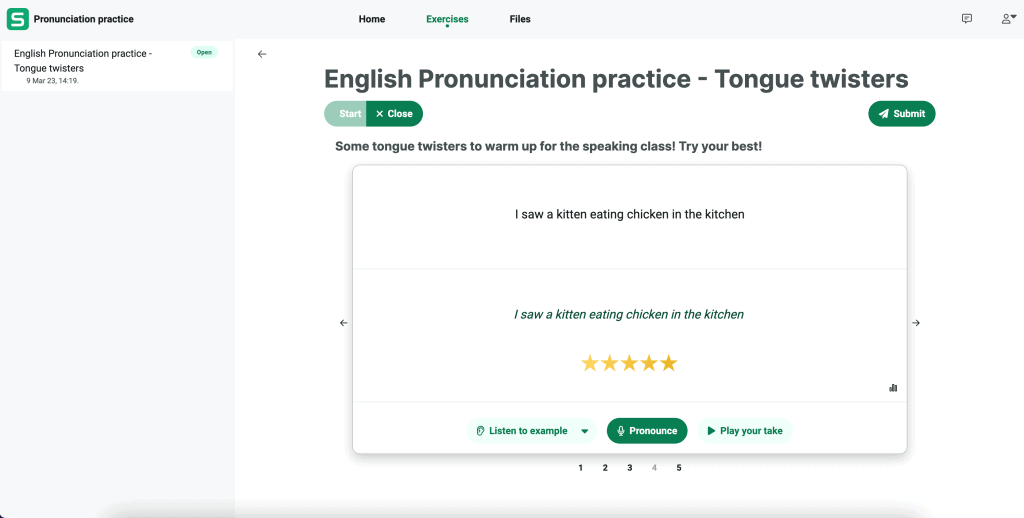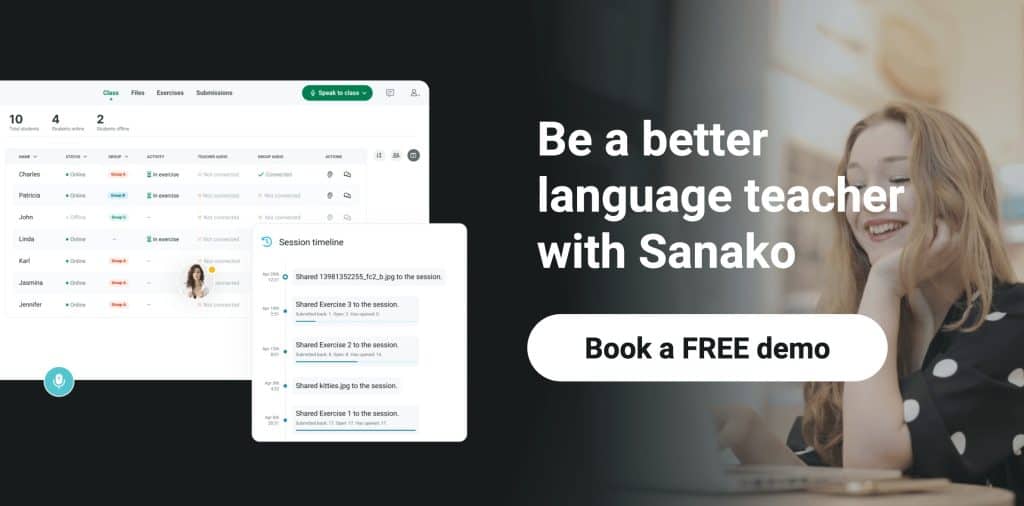There are many reasons why students are inspired to learn a new language – they might be working towards a new qualification, moving to a new country for work, or perhaps they just want to challenge themselves and broaden their horizons. Successfully learning a new language is, for the majority of learners, all about achieving a specific goal or target. With this in mind, language educators are particularly focused on helping students to achieve these objectives. This blog post explores how languages can most effectively be learned and considers how language teachers can boost students’ mindset and help them to achieve success in second language learning. It also reviews how Sanako’s learning technologies can play a key role in helping learners and educators.
How do we learn languages?
The process of learning languages is well understood and universally accepted. It is composed of two core elements – social learning and statistical learning. Learners observe native speakers/writers in action, identifying patterns in the language they use (statistical learning). These patterns are then tested by interacting with other people – whose feedback can then be used to correct and improve the understanding of the patterns identified (social learning).
This model applies across both spoken and text-based skills, although the latter has traditionally dominated language teaching. As a result, students tend to have less opportunity to practice their speaking skills, even though they’re the most difficult to learn. Research from Deutsch Englisch Schülerleistungen International (DESI) found that students in traditional classrooms only had 21 seconds speaking time per lesson but that the use of language labs / software boosted this to 11 minutes per lesson. These technologies are also therefore able to drive greater improvements in learning outcomes.
Boosting students’ mindset to create conditions for learning success
According to Sarah Mercer, Professor of Foreign Language Teaching at the University of Graz, Austria, educators also play a key role in creating the right conditions for academic success. Educators, she argues, should work to ensure that learners are in the right frame of mind to succeed with their new language. Without this, even the best teachers will struggle to engage learners.
Mercer identifies 5 key areas of learner psychology which, she believes, can make a significant difference to successful learning outcomes. She calls them the two Gs and the three Cs!*
Grit
Anyone who teaches languages or has ever tried to learn a new language will know what a time consuming process it can be. Progress is sometimes hard to see and maintaining motivation is vital to making real progress. Students therefore need grit to keep going, taking one step after another to achieve their goals.
We at Sanako recognise this and our language teaching software offers learners (and educators) a wide variety of different ways to access and engage with content. Educators can upload a full range of stimulus materials as part of developing students’ core skills, making it easy for students to get involved and to maintain their motivation.
Growth mindset
Linked to the above, Mercer believes that students also need a strong growth mindset to succeed. Without this, students do not believe that their language abilities will ever improve. The secret for educators is to provide opportunities for students to regularly demonstrate their improvement.
Sanako’s Connect product, for example, enables students to easily measure the accuracy of their pronunciation. When they repeat a piece of authentic speech content, the software records their own voice for comparison against the original. Connect then gives the student a score and provides immediate feedback. This gamified approach also keeps students motivated.
Competence
Mercer goes on to identify that students who succeed in language learning typically feel a sense of ‘I can.’ This stems not only from their mindset, but also from their ability to engage with lessons and learning.
Again there’s much that Sanako solutions can do to help educators to develop their students in this regard. Sanako Connect’s flexibility enables teachers to scaffold learning resources to smooth progress. Educators are also able to create tasks for students of all abilities within Connect, based on those materials, to test their skills and understanding. Furthermore, Sanako solutions enable educators to quickly feedback to students highlighting progress and clarifying next steps.
Control
Learners who feel in control of their learning are also able to make better progress in their chosen language. As Mercer identifies:
“Learners benefit from being able to intentionally and proactively select and initiate approaches to learning where possible in their contexts.”
Tools such as Sanako Connect are also particularly effective in helping to decrease learners’ anxiety and increase their willingness to communicate. For some learners, choosing to communicate digitally is also less stressful than chatting face-to-face in a classroom. Online tools also give learners more time to process and review associated stimulus materials and to plan and prepare their response.
Connectedness
Mercer’s third C highlights the importance of ensuring that learners feel connected to both their teachers and their peers but also to the language they’re learning. Ensuring that learners have a clear sense of the relevance of what they’re learning and its future value can be powerful mechanics to encourage student engagement and performance.
Pedagogical approaches such as Task-Based Language Teaching (TBLT) are incredibly powerful in building student connectedness as they focus students on solving tasks which involve the realistic use of language. As outlined in an earlier blog post, Sanako solutions are well suited to supporting TBLT, especially where tasks involve realistic and meaningful communication between students.
Using Sanako Connect, for example, educators can easily divide students into pairs or small groups for online conversation practice. Each group of students can talk simultaneously without distracting each other, while teachers can easily listen in or talk with different groups to assist as required.
Click the button below to learn more about Sanako Connect and how it could transform language education in your school or university.
References used in this article:
*Minds matter: Psychology of language learning, March 2018, Oxford University Press ELT.
This blog post was last updated 14 April, 2023.



